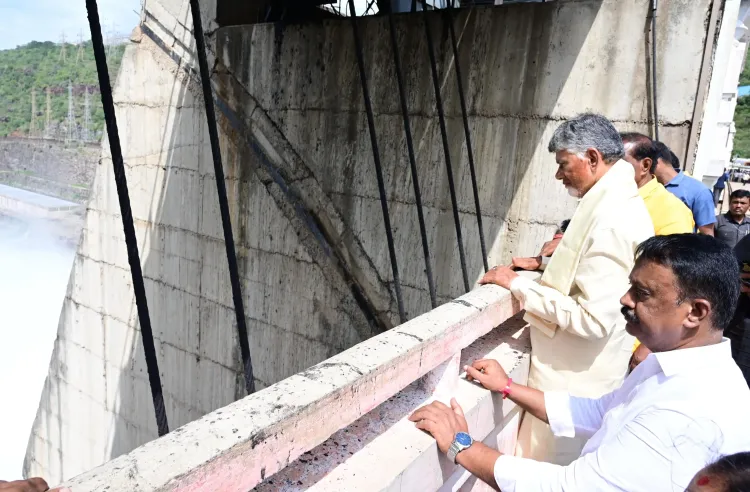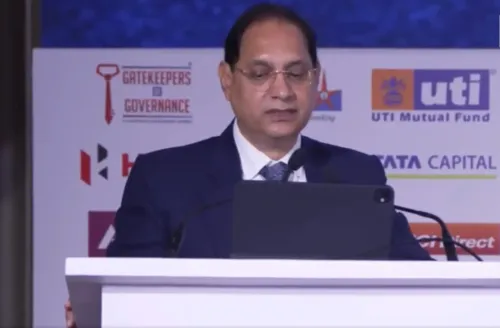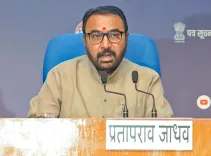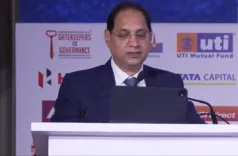Should Telugu States Harness River Water Flowing to the Sea?

Synopsis
Key Takeaways
- Collaboration between Telugu states is essential for effective water management.
- Utilizing river water can significantly benefit farmers in both states.
- The Godavari-Banakacherla project is controversial and faces opposition.
- Current inflows into the Srisailam dam are promising for irrigation support.
- CM Naidu aims to enhance Rayalseema's agricultural potential.
Amaravati, July 8 (NationPress) The Chief Minister of Andhra Pradesh, N. Chandrababu Naidu, emphasized on Tuesday that the Telugu states must collaboratively harness the river water that is currently flowing wastefully into the sea.
He mentioned that if Andhra Pradesh and Telangana join forces to utilize the river water flowing into the sea, it would significantly benefit farmers in both states.
Naidu made these comments while addressing a gathering of water consumers after inaugurating the opening of four gates of the Srisailam dam on the Krishna River, located on the border between Andhra Pradesh and Telangana.
His statements come in light of the ongoing debate surrounding the Godavari-Banakacherla project proposed by Andhra Pradesh, which has faced opposition from the Telangana government.
Recently, the Central Environmental Expert Committee (EAC) denied the project’s environmental clearance due to the concerns raised by Telangana.
The Chief Minister of Telangana, A. Revanth Reddy, along with Irrigation Minister Uttam Kumar Reddy, has urged the Centre to reject the project.
This project aims to divert 200 TMC (thousand million cubic feet) of floodwater from the Godavari River to irrigate 7.41 lakh acres, stabilize 22.58 lakh acres in Rayalaseema and the southern coastal districts, and provide industrial water.
CM Naidu insists that the proposed project will not adversely affect Telangana's interests.
He stated last week that approximately 2,000 TMC of water from the Godavari River is being wasted into the sea and that its utilization would be advantageous for both states.
During Tuesday's event, CM Naidu expressed satisfaction as, for the first time, the Srisailam dam has reached full capacity in the first week of July due to substantial inflows from upstream sources in Karnataka and Maharashtra.
The crest gates 6, 7, 8, and 11 of the Srisailam dam were opened to release floodwaters downstream.
CM Naidu, who performed the traditional Jala Harathi ritual to honor the river goddess, remarked that the Srisailam dam is currently holding around 200 TMC of water, nearing its gross storage capacity of 215.81 TMC.
He underscored that the Krishna River serves as the lifeblood for both Telugu states and that these inflows bring renewed hope to farmers. He expressed confidence that the release of water from Srisailam would also ensure adequate inflows to the Nagarjuna Sagar Dam in Telangana for irrigation and drinking water supply.
The water level at Srisailam was recorded at 881.6 feet, just below its full reservoir level (FRL) of 885 feet.
The reservoir is receiving over 1.53 lakh cusecs of inflow, primarily from the Jurala project in Telangana and the Tungabhadra River in Karnataka.
Chandrababu Naidu reiterated his commitment to transforming Rayalseema into 'Ratanala Seema' by completing various irrigation projects, describing these initiatives as modern temples.









